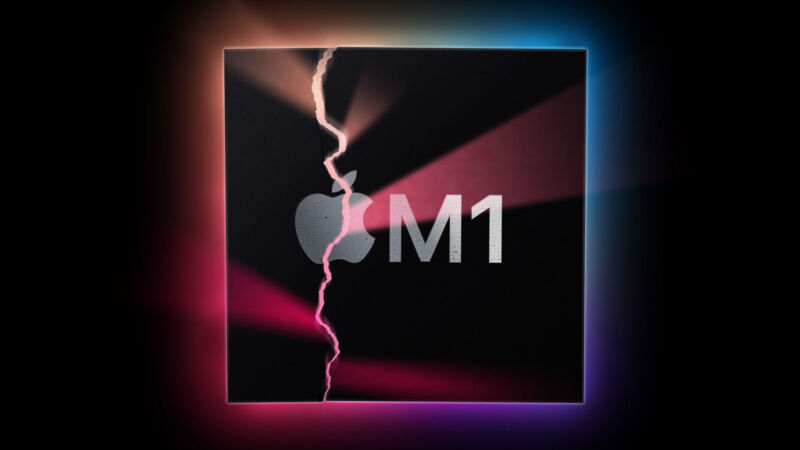
Enlarge (credit: Aurich Lawson | Apple)
side channel allowing end-to-end key extractions when Apple chips run implementations of widely used cryptographic protocols—can’t be patched directly because it stems from the microarchitectural design of the silicon itself. Instead, it can only be mitigated by building defenses into third-party cryptographic software that could drastically degrade M-series performance when executing cryptographic operations, particularly on the earlier M1 and M2 generations. The vulnerability can be exploited when the targeted cryptographic operation and the malicious application with normal user system privileges run on the same CPU cluster.
Beware of hardware optimizations
The threat resides in the chips’ data memory-dependent prefetcher, a hardware optimization that predicts the memory addresses of data that running code is likely to access in the near future. By loading the contents into the CPU cache before it’s actually needed, the DMP, as the feature is abbreviated, reduces latency between the main memory and the CPU, a common bottleneck in modern computing. DMPs are a relatively new phenomenon found only in M-series chips and Intel’s 13th-generation Raptor Lake microarchitecture, although older forms of prefetchers have been common for years.
Read 21 remaining paragraphs | Comments
Article Tags:
featuredArticle Categories:
Technology





